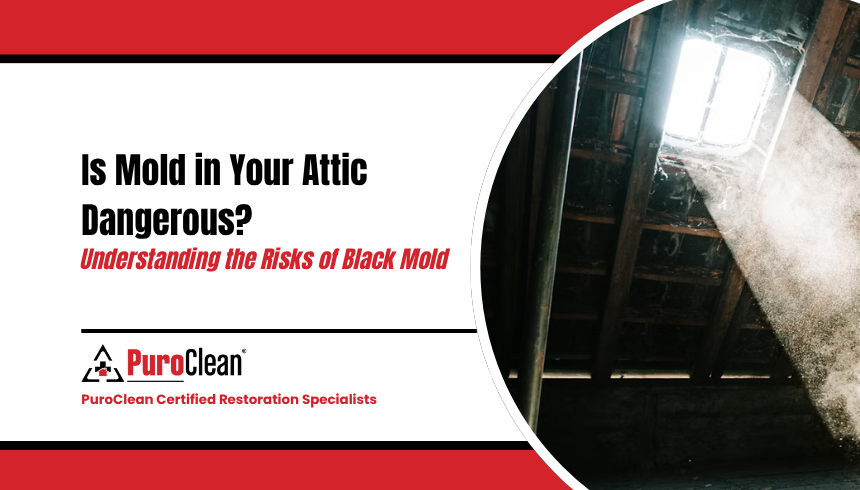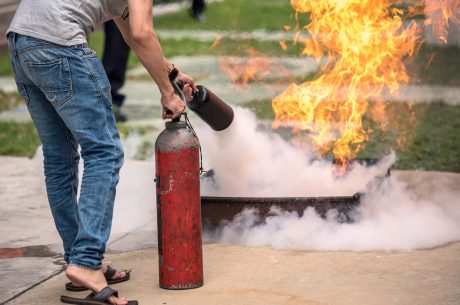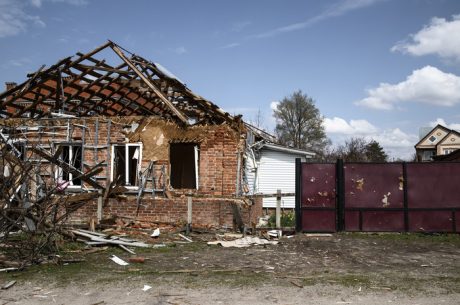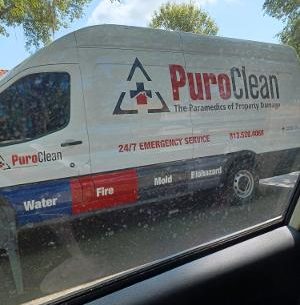Key Takeaways
- Mold in the attic is a serious issue that can harm both your home and health if left untreated.
- Black mold grows in moist, warm, and poorly ventilated areas, making attics especially vulnerable.
- Regular inspections and professional testing are essential for identifying hidden mold infestations early.
- Effective prevention includes ventilation improvement, moisture control, leak repairs, and mold-resistant materials.
- Professional mold remediation in Zephyrhills offers safe removal, prevents recurrence, and protects your family’s well-being.
Mold in the attic is more than just an unsightly problem—it can quietly damage your home and put your health at risk. Among the many types of mold, black mold is one of the most concerning due to its potential toxicity and ability to spread quickly.
In this article, we’ll explore what black mold is, why it grows in your attic, how to spot the warning signs, and what steps you can take to prevent and remove it. We’ll also explain when it’s time to call in professional mold remediation services in Zephyrhills to ensure your home and family stay safe.
What Is Black Mold, and Why Does It Grow in the Attic?
Black mold is a toxic type of fungus that thrives in damp, warm, and poorly ventilated areas. Attics are particularly vulnerable because they often trap heat and humidity, especially when insulation or ventilation is inadequate. Roof leaks, condensation, and blocked gutters can also create the perfect conditions for black mold spores to settle and spread. Unlike dust or dirt, black mold can be dangerous, releasing spores that circulate throughout your home.
It’s important to understand that not all attic mold appears black, yet all types can present risks to both your home’s structure and your family’s health. By recognizing why black mold grows in attics, homeowners can take preventive measures such as improving airflow, fixing leaks promptly, and managing indoor humidity levels.
Signs of Mold Infestation in the Attic
Spotting mold in your attic early can save you from costly repairs and health risks. Mold doesn’t always show up clearly, but certain warning signs should never be ignored. Here are the most common signs of mold infestation in the attic:
| Signs of Mold | What It Means |
| Musty Odor | Mold may be present even if it’s not yet visible. |
| Water Stains | Moisture from leaks or condensation is feeding mold growth. |
| Discoloration | Dark or green patches suggest spore colonies on surfaces. |
| Visible Growth | Fuzzy, slimy patches are direct evidence of mold infestation. |
| Allergy Symptoms | Sneezing, coughing, or headaches can indicate mold exposure. |
Potential Health Risks of Mold Exposure
Mold exposure, especially in attics, can affect both your health and quality of life. The severity depends on the type of mold, exposure time, and your individual sensitivity. Understanding the risks can help you address the problem before it causes serious harm.
- Long-Term Health Effects – Chronic exposure to toxic molds like black mold can lead to severe respiratory problems and other systemic issues.
- Allergic Reactions – Mold spores can trigger sneezing, itchy eyes, and congestion in sensitive individuals.
- Asthma Attacks – Exposure may cause wheezing, chest tightness, and breathing difficulties in people with asthma.
- Respiratory Infections – Prolonged mold exposure can lead to persistent coughs, sore throats, and sinus inflammation.
- Skin Irritation – Contact with mold spores can cause rashes, redness, or itching.

How to Test for and Remove Black Mold
Testing and removing black mold in your attic requires expertise and the right equipment. Mold spores can easily spread or remain hidden, making professional help crucial. Below are the key steps involved in testing and remediation, explained in detail so you know what to expect during the process.
1. Collecting Air and Surface Samples
Professionals start by collecting air samples using spore traps and surface swabs from attic materials. This helps detect invisible spores floating in the air or attached to surfaces. Testing is important because black mold often spreads undetected, and these samples provide reliable data to confirm its presence and severity before deciding on safe removal procedures.
2. Inspecting Visible Growth and Damage
Next, inspectors carefully examine areas with visible mold colonies, water stains, or discoloration. They also check insulation, wooden beams, and drywall for hidden contamination. Many times, damage extends further than what can be seen on the surface. This inspection stage ensures all affected areas are identified so nothing is overlooked during remediation efforts.
3. Measuring Humidity and Moisture Levels
Moisture meters and other specialized tools are used to measure humidity in the attic, especially in hidden or enclosed spaces. Elevated moisture is a strong indicator of mold-friendly conditions, even when visible growth isn’t obvious. Identifying these problem spots helps professionals recommend targeted fixes that prevent mold from reappearing once remediation is complete.
If mold is detected, immediate action is necessary to prevent further spread and health risks. Mold remediation involves a careful, multi-step process designed to fully remove contamination, address moisture issues, and restore the attic to a safe condition. These steps ensure both safety and long-term prevention.
4. Assessment
The first step is to determine the extent of the infestation. Professionals inspect the attic thoroughly, checking walls, insulation, and hidden spaces for mold. This stage helps define the scope of work and identifies areas requiring removal or repair, ensuring that no contamination is left behind to cause recurring issues.
5. Containment
Once the affected areas are identified, containment procedures are established. This involves sealing off the attic with plastic sheeting and creating negative air pressure to prevent mold spores from spreading to other areas of the home during cleanup, protecting occupants and ensuring a controlled remediation process.
6. Removal
Contaminated materials that cannot be salvaged—such as insulation, drywall, and carpet—are carefully removed. This prevents the spread of spores and eliminates the mold colony’s food source. Professionals dispose of these materials according to safety guidelines to reduce health risks and ensure proper handling of hazardous waste.
7. Drying and Cleaning
After removal, the attic is dried thoroughly using dehumidifiers and ventilation systems to eliminate residual moisture. Surfaces are then cleaned and sanitized with antimicrobial solutions to ensure all spores are eradicated. This step is essential to prevent mold from returning and to restore the attic to a safe, healthy state.
How Can You Prevent Mold in the Attic?
Preventing mold in the attic is far easier than removing it later. Effective prevention requires addressing the root causes, especially moisture and poor ventilation. The following strategies can significantly reduce mold growth and protect your home’s structure and indoor air quality over time.
- Improve Ventilation
Proper ventilation reduces humidity and prevents moisture buildup, both of which are key to stopping mold growth. Installing roof vents, soffit vents, or attic fans allows warm, damp air to escape. This helps maintain airflow and keeps surfaces dry. Consistent attic ventilation lowers the risk of condensation, making mold growth far less likely.
- Use Mold-Resistant Materials
During construction or renovation, using mold-resistant drywall and antimicrobial paint adds an extra layer of protection. These materials are designed to resist moisture absorption and inhibit mold growth. They are particularly useful in attics where humidity fluctuates. Investing in these products reduces the likelihood of future infestations and extends the life of your attic structure.
- Fix Leaks Quickly
Leaks in roofing, plumbing, or gutters create ideal conditions for mold growth. Even small leaks can cause significant problems if left untreated. Inspect your attic regularly, especially after storms, and address leaks immediately. Prompt repairs prevent moisture buildup, structural damage, and costly mold remediation later. Early intervention keeps your attic dry and safe.
- Control Humidity
High humidity levels create a perfect environment for mold growth. Using a dehumidifier in the attic helps maintain safe moisture levels, typically between 30–50%. Regular monitoring of humidity can prevent mold spores from thriving. Controlling moisture not only protects your attic but also improves indoor air quality for your entire home.
Why Call a Professional Mold Remediation Specialist?
Mold remediation involves more than removing visible growth—it requires expertise, safety measures, and specialized tools. Professionals ensure mold is fully eradicated while preventing recurrence. Hiring experts protects your health, home, and investment by addressing the problem safely and efficiently.
✔ Compliance with Laws – Professionals understand state and local mold legislation to ensure remediation follows legal requirements.
✔ Accurate Assessment – Experts can identify the full extent of mold growth, including hidden areas, ensuring thorough removal.
✔ Proper Equipment – Specialized tools and protective gear make mold removal safer and more effective than DIY methods.
✔ Insurance Support – Professionals document mold damage to help homeowners with insurance claims.
✔ Peace of Mind – Knowing the mold is completely removed and prevented from returning offers lasting comfort and safety.
Frequently Asked Questions
What are the dangers of ignoring attic mold?
Ignoring attic mold can lead to worsening structural damage, reduced insulation effectiveness, and long-term health issues. Prolonged exposure increases the risk of respiratory illnesses, allergic reactions, and costly repairs. Early remediation is key to preventing serious problems.
Is attic mold harmful to pets?
Yes. Pets exposed to attic mold may develop respiratory problems, coughing, sneezing, or skin irritation. Prolonged exposure can cause more serious health issues. Because pets are closer to floors where spores may settle, it’s important to remediate mold quickly to protect their health.
How much does attic mold remediation cost?
Costs vary based on the severity of mold growth, attic size, and the remediation process. Minor infestations may cost a few hundred dollars, while extensive cases can run into thousands. Getting a professional inspection helps determine the scope and provides a more accurate cost estimate.
How long does attic mold remediation take?
The time required depends on the size of the infestation and the severity of damage. Small projects may take a day or two, while extensive infestations could require several days. Professionals assess the situation and create a remediation plan, ensuring the process is effective and minimizes recurrence.
Does homeowners’ insurance cover mold removal?
Coverage varies by policy and cause of mold growth. Many policies cover mold removal if it results from a covered peril, such as water damage from a burst pipe. Homeowners should check their policy and consult their insurer for specific coverage details.
The Final Thoughts
Mold in your attic, especially black mold, poses serious risks to both your home and health. Early detection, proper testing, and effective remediation are crucial to preventing costly damage and long-term health issues. Taking proactive measures now protects your property, improves air quality, and ensures a safe living environment for your family.
If you suspect mold in your attic, don’t wait. PuroClean Zephyrhills offers professional mold remediation and restoration services to keep your home safe. Contact us today for a thorough inspection and effective removal so you can breathe easier knowing your home is protected



